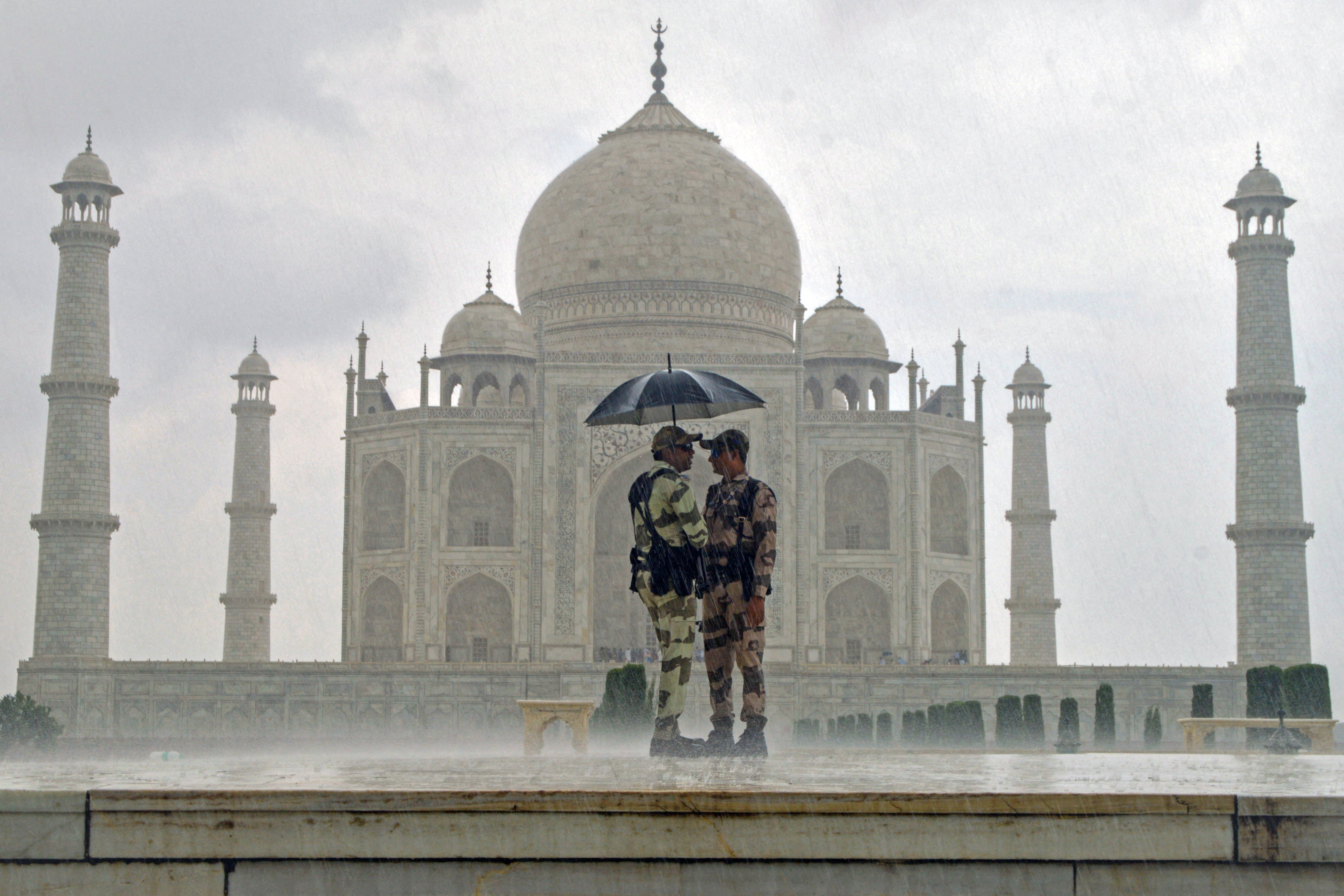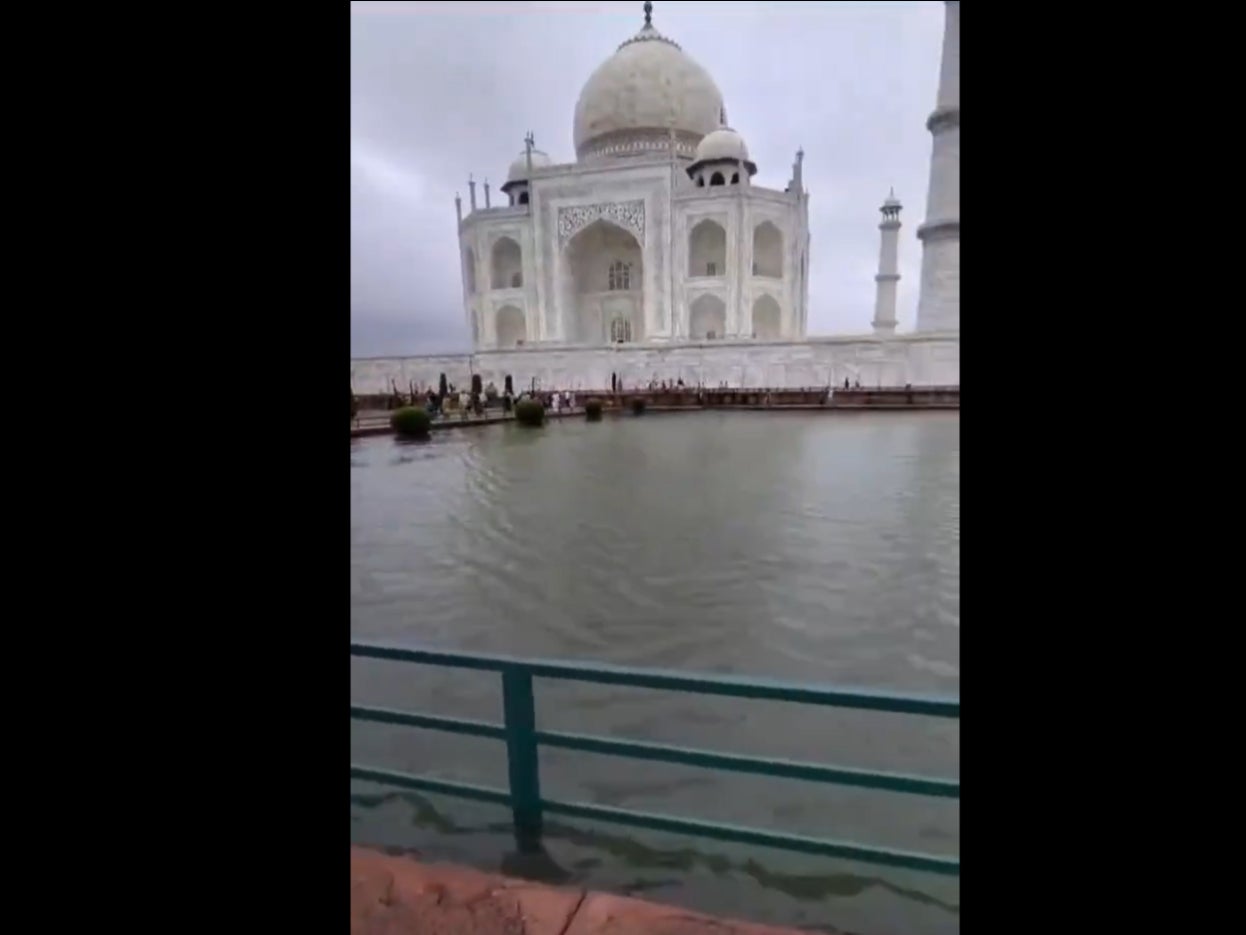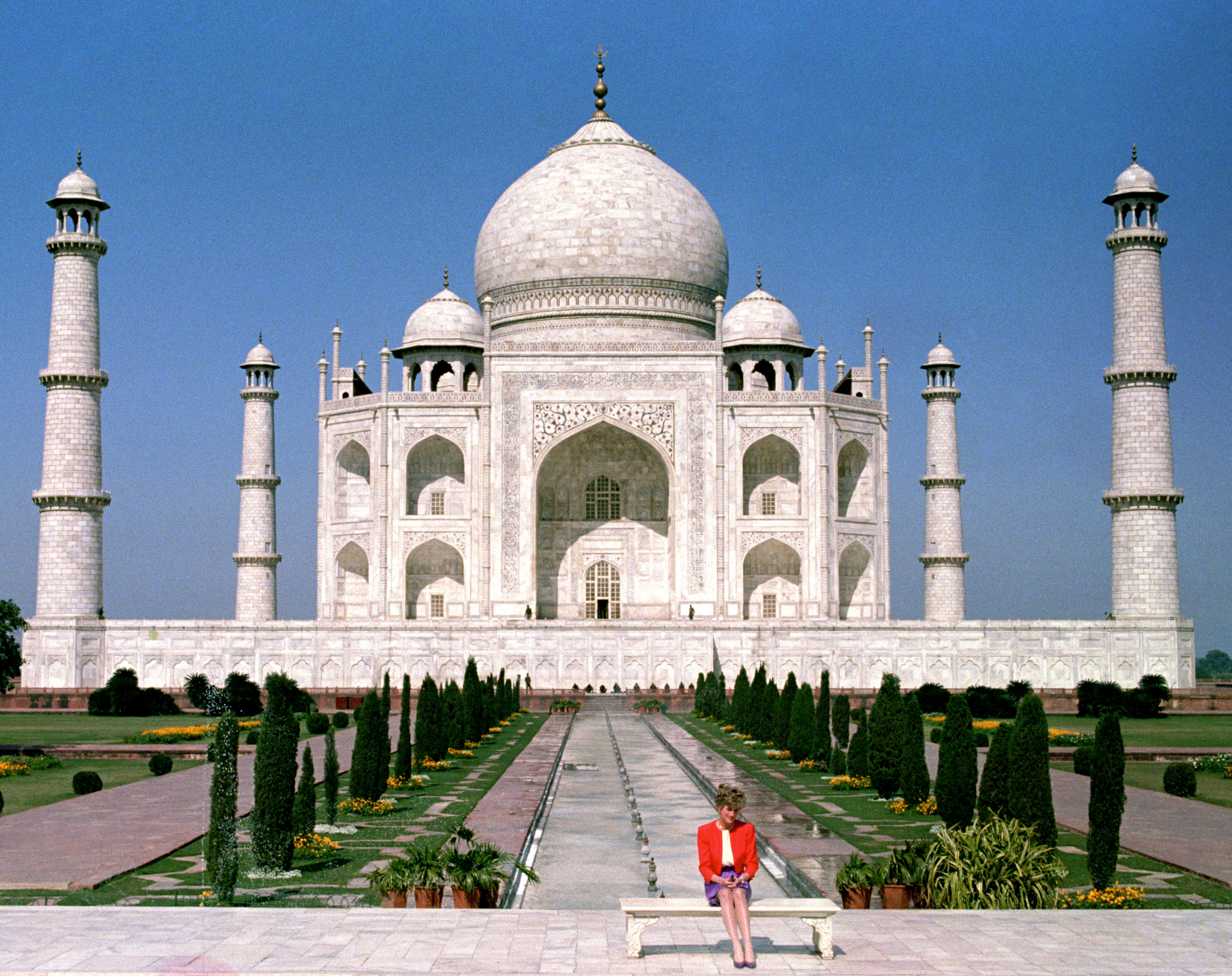Fears Taj Mahal has been damaged in flooding as water leaks into central tomb
Officials say they are assessing the extent of the damage as the Taj Mahal’s gardens flooded with water during sustained heavy rainfall

Your support helps us to tell the story
From reproductive rights to climate change to Big Tech, The Independent is on the ground when the story is developing. Whether it's investigating the financials of Elon Musk's pro-Trump PAC or producing our latest documentary, 'The A Word', which shines a light on the American women fighting for reproductive rights, we know how important it is to parse out the facts from the messaging.
At such a critical moment in US history, we need reporters on the ground. Your donation allows us to keep sending journalists to speak to both sides of the story.
The Independent is trusted by Americans across the entire political spectrum. And unlike many other quality news outlets, we choose not to lock Americans out of our reporting and analysis with paywalls. We believe quality journalism should be available to everyone, paid for by those who can afford it.
Your support makes all the difference.Water is leaking into the central tomb of the Taj Mahal after three days of sustained heavy rainfall led to a crack appearing in the roof of India’s most famous landmark.
The government agency responsible for maintaining India’s monuments said it was urgently investigating the extent of the damage to the 17th-century mausoleum.
Videos circulating online showed one of the Taj Mahal’s four gardens completely inundated with water. Photography is strictly prohibited inside the structure itself, where officials said water had been observed.

“Moisture was observed inside the main mausoleum,” said Rajkumar Patel, a senior official with the Archaeological Survey of India (ASI). “There may be a hairline crack in the dome’s stones, causing the leakage.”
“The place where water drops are falling is being checked, to find out whether it is continuously in the same position or is falling intermittently. In any case, necessary repairs will be carried out. The garden will be rejuvenated once the rain stops,” Mr Patel told the Times of India.
The Taj Mahal, located in Agra in Uttar Pradesh state, is a Unesco World Heritage Site. It was built by the emperor Shah Jahan as a mausoleum for his favourite wife, Mumtaz Mahal.
A government-approved tourist guide said the water leaking from the dome had reached the chamber which houses the tombs of Shah Jahan and his wife.
The Taj Mahal remains one of the most iconic destinations in India, having been visited by many world leaders and prominent personalities, including perhaps most famously Charles and Diana, Princess of Wales. More recently, the likes of former prime minister Boris Johnson and former US president Donald Trump have also included the monument on the itinerary for official visits.

This is not the first time concerns have been raised about the upkeep and maintenance of the most famous tourist site in India. Historians have blamed poor management of air and water pollution around the architectural marvel for causing the gradual yellowing of the monument, dulling its brilliant white marble.
It comes as much of northern India, including Uttar Pradesh, Uttarakhand and the national capital Delhi, experienced heavy rainfall, inundating city streets due to a combination of poor drainage systems and inadequate urban planning.
This week Agra received 151mm of rain in a single day – the highest recorded in 80 years – causing damage and flooding at other historical sites such as Agra Fort and Fatehpur Sikri Fort.
Join our commenting forum
Join thought-provoking conversations, follow other Independent readers and see their replies
Comments